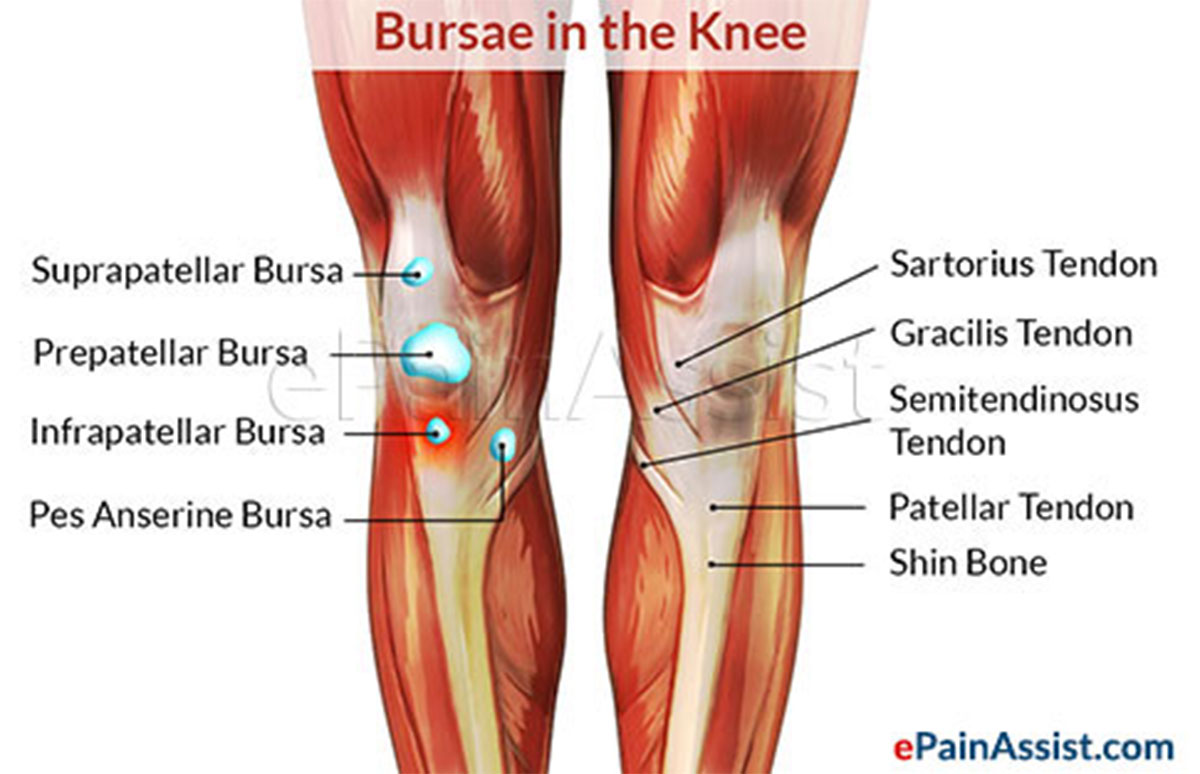A bursa is a small sac containing fluid, which is responsible for lubrication during movement between bone and tendons.1 Inflammation or irritation of the bursa is called bursitis, which causes a lot of pain.
What is Infrapatellar Bursitis or Clergyman’s Knee

A bursa is a small sac containing fluid which is responsible for lubrication during movement between bone and tendons. Infrapatellar bursitis (clergyman’s knee) is the inflammation of the infrapatellar bursa located just below the kneecap.2 The deep bursa is situated between the patellar ligament and the upper front surface of the tibia. The superficial bursa is located between the patellar ligament/patellar tendon and the skin. Friction or chafing between the skin and the bursa results in infrapatellar bursitis. This may sometimes occur along with Jumper’s knee.
Symptoms of Infrapatellar Bursitis or Clergyman’s Knee
- Pain in the anterior region of the knee.3
- Swelling in the region of bursa.
- Pain can be similar to that of jumper’s knee.
Treatment of Infrapatellar Bursitis or Clergyman’s Knee
- Rest.
- Direct pressure on the knee should be avoided such as when kneeling.
- Cold therapy helps in reducing the pain and swelling.
- Compression helps in reducing the pain and swelling.
- Anti-inflammatory medications such as ibuprofen help in pain and inflammation.
- If patient does not benefit from conservative treatment, then aspiration of the fluid from bursa can be done along with an injection of corticosteroids into the bursa.
- If all fails, then surgical removal of bursa is done as a last resort.
